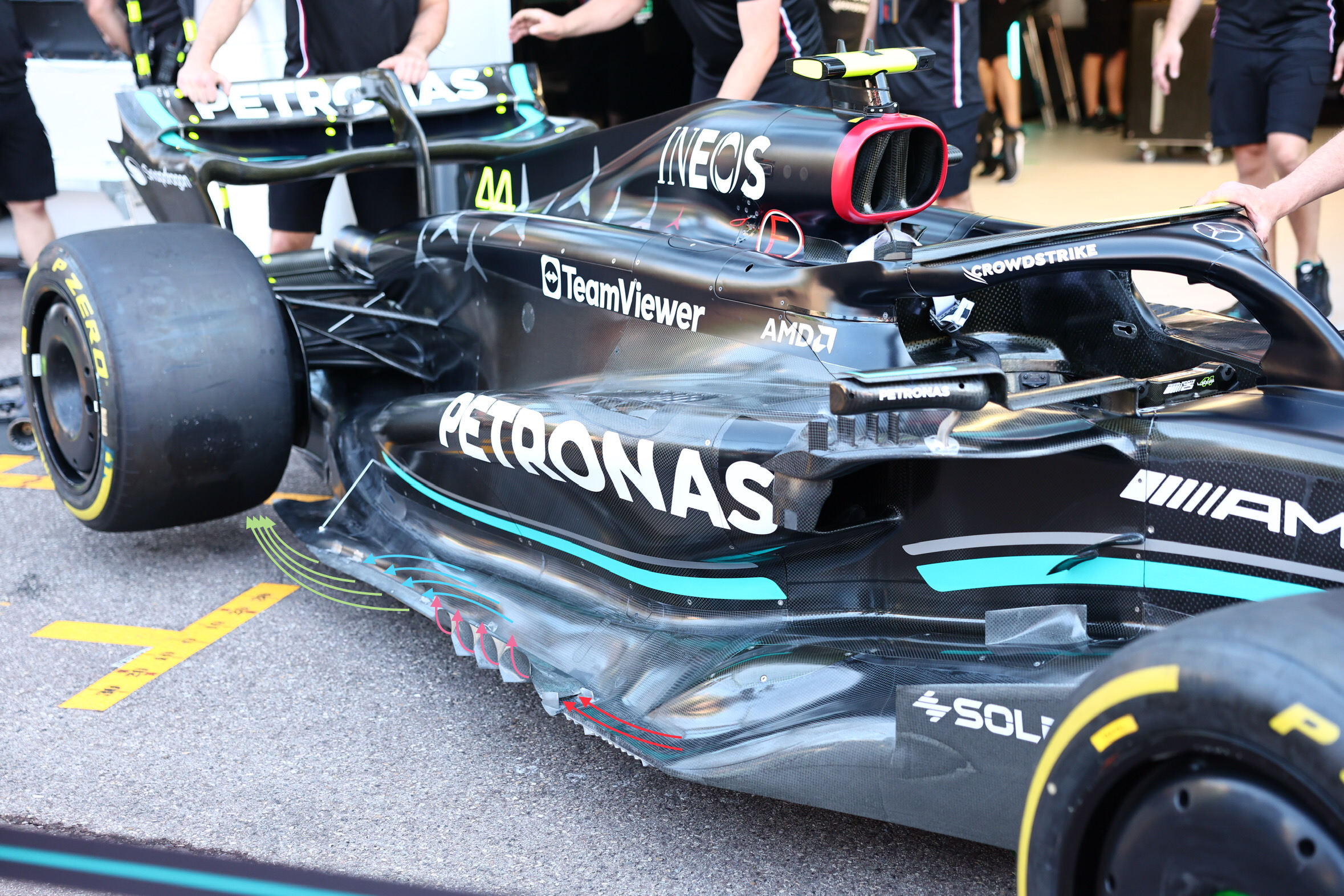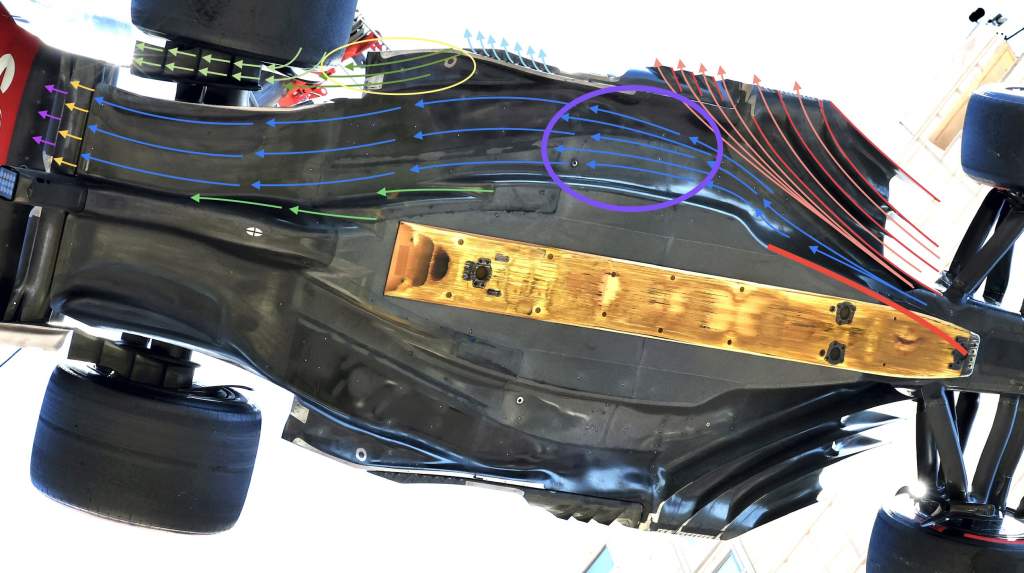Up Next

Thanks to Lewis Hamilton’s indiscretion at Mirabeau during FP3 at Monaco, we have finally got a look at the underfloor of the Mercedes – much to team boss Toto Wolff’s chagrin.
As we have said on many occasions, it’s not the parts of the aerodynamic surfaces that are normally visible that give the car performance. Instead, it mainly comes from the underfloor. What the visual surfaces do is help set up the airflow structure that works in harmony with the underfloor.
Looking at the newly-introduced floor that Mercedes is running in Monaco and trying to analyse how it works, I have added some simple details and airflow lines to help you visualise the different areas and how the airflow in one areas work with that in another area.
I can only put in some two-dimensional details; in reality, the airflow structure over the complete car is very three-dimensional and the expansion rates are all relative to that flow.
But hopefully this analysis will give an understanding of how critical even the smallest detail can be to keeping that three-dimensional airflow attached to all the surfaces it is licking.

The red lines are simply the bottom of the floor’s leading-edge splitters. These work like the bargeboards of the past and turn the majority of the airflow outwards.
The orange arrows between those red lines represent that flow, which will also be pulled around the rear surface of the rearmost longest splitter.
The small vanes on the outer edge of the floor are sort of an extension of these splitters. The outer corners of them will set up some vortices that you can see when the cars run in damp conditions.
These vortices will work in conjunction with the longitudinal outer edge horizontal wing section. If the vortices all work as planned, then the light blue arrows on that outer edge will reduce the amount of airflow that the low pressure under the car will be trying to pull in from the outside world.
Because of the clearance to the track surface there will also be some spillage over the lower edge of these red-marked splitters. If this spillage forms correctly, it will generate horizontal vortices, which will help energise the airflow going across the throat of the floor which is highlighted with the purple ellipse.

The blue arrows on the floor’s surface represent what the diffuser has to work with. It pulls its flow from between the innermost forward splitter and the inner vertical floor and side of the chassis, which is highlighted with the thicker red line. This means the diffuser has the maximum length to accelerate the flow and generate as low a pressure under the car as possible.
That diffuser flow will then be helped by the rear beam wing. The yellow arrows are on the beam wing’s mainplane and the magenta arrows are on the beam wing’s flap.
Any leakage along the floor’s edge will reduce the potential downforce, as it will increase the pressure under the car. The area around the rear tyre is critical to reducing this leakage and the cascade of turning vanes mounted on the inside of the rear brake ducts plays a big part in managing this flow around the rear tyre.

The light green arrows (in the first picture) show how the airflow gets pulled upwards by these turning vane surfaces. It picks up its flow from what is called tyre squirt. This is when the tyre rotates onto the track surface and displaces the air that is in front of it.
This flow then picks up the airflow that is in front of it on the floor’s upper and mainly lower surface, highlighted with a yellow ellipse. If this all works as planned then you actually get some downforce from these brake duct turning vanes, which gives you load directly onto the tyre contact patch. That means no delay as it goes through the movement of the suspension system.
And to add to that, you will get much better performance from the complete diffuser and underfloor, which means more overall grip. You just need to get it all working as one.
As you can see from the purple ellipse, the throat of the floor is very close to the middle of the car’s wheelbase, so getting it all working consistently from high to low ride heights is critical to the stability of the car’s aerodynamic centre of pressure.
If a detailed comparison shot of the Red Bull is to be made available, I think we might just see a slightly more sophisticated underfloor surface and a more aggressive approach to how the leading edge turning vanes manage the intake flow.
And when it comes to those shots, Monaco might just be our big chance as they get very excited with their crane.





